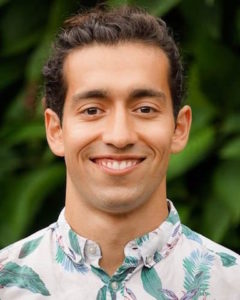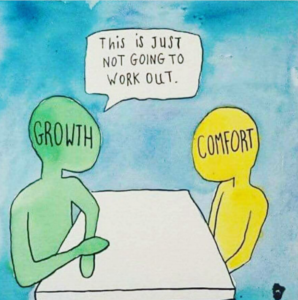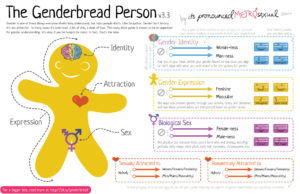By: Elnur “El” Gajiev, PsyD

Elnur “El” Gajiev, PsyD
It was a crisp late February morning in Salt Lake City; snow falling upon the Wasatch mountain range to the east and the Oquirrh range to the west – quite a different scene than the tropic landscapes of Hawai’i that I’d become accustomed to. Yet, here in the heart of snowy Utah, I found myself in the midst of an inspiring collection of clinicians, program administrators, educational consultants, frontline staff, students, learners, and phenomenal speakers. We had gathered for the third annual Gender Education and DeMystification Symposium (GEMS) Conference – an event dedicated to expanding the awareness, knowledge, and skillful practice of engaging with gender-expansive youth.
“Gender-expansive?” you may ask. I know, I was right there with you. Entering the conference, I had many of my own questions, based upon the limits of my own understanding. Sure, I had worked with several LGBTQI+ clients in the past, but given the rapidly evolving changes within our greater social sphere, there was, and will continue to be, so much to learn and keep current with. This is particularly so with a population that is constantly stretching the bounds of what we believed was once impossible. That said, what truly impressed me about the GEMS Conference was the felt sense of acceptance and camaraderie in honoring the experiences that each of us came in with, and the manner in which were brought together in expanding our individual and collective understandings.

Of course, this could not have been possible without the outstanding speakers who were present. Speakers, who noted the relationship between growth and comfort (see picture above), and challenged us to question many of our previously-held beliefs through thought-provoking exercises and activities. As one speaker provided us with a foundational framework of languaging related to this work – noting the differences between biological sex, gender identity, sexual orientation, gender expression, and sexual behavior (cheat sheet below) – another spoke about the striking data, including:
- 50% of transgender youth under the age of 20 have attempted suicide at least once
- LGB youth are 3x more likely than their straight peers to contemplate suicide
- 40% of homeless youth are LGBTQ
- 6 in 10 LGBTQ youth feel unsafe in schools
- 80% of LGBTQ youth report severe social isolation
Several speakers spoke about the importance of attuning to intersectionality, that is, “the interconnected nature of social categorizations such as race, class, and gender as they apply to a given individual or group” and how this plays a critical role in creating overlapping and interdependent systems of discrimination, distress, and disadvantage for our children and their families.

One of the more powerful notions that I had a chance to engage with firsthand, before the entire audience, was the concept of “Gender Dysphoria Noise.” This concept highlights the oscillating, yet continuous, nature of gender dysphoria through the various stages of transition, and just how dysregulating of an experience it can be to engage in some of the more simple aspects of life, from going out with friends to traveling, and yes, even using the bathroom. For me, this also underlined the many privileges that I personally hold as a cis-gender heterosexual male, meaning there is so much that I have the luxury of not having to think about in my everyday experience. And so, as a clinician, this further emphasized the significance of understanding how my day-to-day worldview may differ vastly from that of my students who identify as LGBTQI+. Furthermore, as a member of an organization dedicated to fostering sustainable growth in youth and families, this also highlighted several points of growth that we have before us from a programmatic vein, and how the impetus falls upon us to face these challenges with the same acceptance, awareness, and openness that we ask of our students and our families.
And since we’re on the topic of students, I think I can speak for nearly every single one of us in attendance in saying that the most resonant session throughout the 3-day conference was the student panel – each of whom shared their experience, their insight, their humor, and their wisdom in remarking on their personal journeys as well as the ways in which those of us on the other side of the mental health baton can hinder or help them in navigating the worlds before them. The lessons were endless, and rippled through many of us in attendance, and I for one was deeply grateful for the opportunity to be present as a listener and a learner. My deepest thanks to each of the organizers of the event, the once-more phenomenal speakers and presenters, my fellow colleagues who engaged whole-heartedly, to Denise Westman (an astounding human being), and most importantly, to the students who have shaped the lives of countless others by sharing their voices.
Gender Education and DeMystification Symposium
By: Elnur “El” Gajiev, PsyD It was a crisp late February morning in Salt Lake City; snow falling upon the Wasatch mountain range to the east and the Oquirrh range to the west – quite a different scene than the tropic landscapes of Hawai’i that I’d become accustomed to. Yet, here in the heart of …
By: Elnur “El” Gajiev, PsyD
Elnur “El” Gajiev, PsyD
It was a crisp late February morning in Salt Lake City; snow falling upon the Wasatch mountain range to the east and the Oquirrh range to the west – quite a different scene than the tropic landscapes of Hawai’i that I’d become accustomed to. Yet, here in the heart of snowy Utah, I found myself in the midst of an inspiring collection of clinicians, program administrators, educational consultants, frontline staff, students, learners, and phenomenal speakers. We had gathered for the third annual Gender Education and DeMystification Symposium (GEMS) Conference – an event dedicated to expanding the awareness, knowledge, and skillful practice of engaging with gender-expansive youth.
“Gender-expansive?” you may ask. I know, I was right there with you. Entering the conference, I had many of my own questions, based upon the limits of my own understanding. Sure, I had worked with several LGBTQI+ clients in the past, but given the rapidly evolving changes within our greater social sphere, there was, and will continue to be, so much to learn and keep current with. This is particularly so with a population that is constantly stretching the bounds of what we believed was once impossible. That said, what truly impressed me about the GEMS Conference was the felt sense of acceptance and camaraderie in honoring the experiences that each of us came in with, and the manner in which were brought together in expanding our individual and collective understandings.
Of course, this could not have been possible without the outstanding speakers who were present. Speakers, who noted the relationship between growth and comfort (see picture above), and challenged us to question many of our previously-held beliefs through thought-provoking exercises and activities. As one speaker provided us with a foundational framework of languaging related to this work – noting the differences between biological sex, gender identity, sexual orientation, gender expression, and sexual behavior (cheat sheet below) – another spoke about the striking data, including:
Several speakers spoke about the importance of attuning to intersectionality, that is, “the interconnected nature of social categorizations such as race, class, and gender as they apply to a given individual or group” and how this plays a critical role in creating overlapping and interdependent systems of discrimination, distress, and disadvantage for our children and their families.
One of the more powerful notions that I had a chance to engage with firsthand, before the entire audience, was the concept of “Gender Dysphoria Noise.” This concept highlights the oscillating, yet continuous, nature of gender dysphoria through the various stages of transition, and just how dysregulating of an experience it can be to engage in some of the more simple aspects of life, from going out with friends to traveling, and yes, even using the bathroom. For me, this also underlined the many privileges that I personally hold as a cis-gender heterosexual male, meaning there is so much that I have the luxury of not having to think about in my everyday experience. And so, as a clinician, this further emphasized the significance of understanding how my day-to-day worldview may differ vastly from that of my students who identify as LGBTQI+. Furthermore, as a member of an organization dedicated to fostering sustainable growth in youth and families, this also highlighted several points of growth that we have before us from a programmatic vein, and how the impetus falls upon us to face these challenges with the same acceptance, awareness, and openness that we ask of our students and our families.
And since we’re on the topic of students, I think I can speak for nearly every single one of us in attendance in saying that the most resonant session throughout the 3-day conference was the student panel – each of whom shared their experience, their insight, their humor, and their wisdom in remarking on their personal journeys as well as the ways in which those of us on the other side of the mental health baton can hinder or help them in navigating the worlds before them. The lessons were endless, and rippled through many of us in attendance, and I for one was deeply grateful for the opportunity to be present as a listener and a learner. My deepest thanks to each of the organizers of the event, the once-more phenomenal speakers and presenters, my fellow colleagues who engaged whole-heartedly, to Denise Westman (an astounding human being), and most importantly, to the students who have shaped the lives of countless others by sharing their voices.
Questions? Call or Text our Admissions Team: 808-937-5806